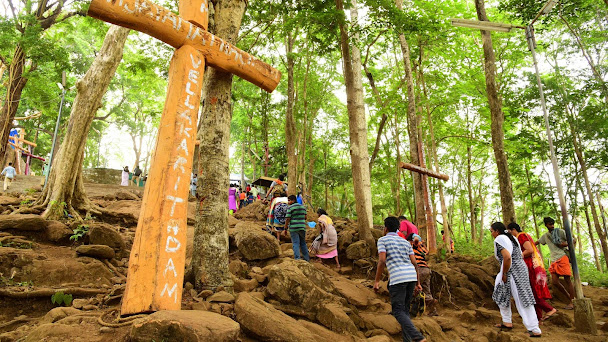History & Majesty of Thalassery Fort
Shaped in a square form this laterite block built fort, decorated with murals has been a symbol of life in Thalassery for over 3 centuries. The fort was built by the British with the help of the Kolathiri rajas who ruled these lands when the British came to Malabar. The British had built a factory here with the permission of the Kolathiri Rajas which angered the local Nair Chieftains. They constantly attacked the factory & made it difficult for the workers to operate. The British wanted to secure their factory & decided to protect the factory. Thus the idea of building a fort came about & in 1708, the fort was built with laterite blocks using quicklime, egg whites & sugar mixture. The structure is so good that the impressive fort still stands tall even after three centuries. The fort has carved doors & many secret tunnels which lead to the sea. The two big tunnels are closed today & visitors are not allowed to enter which once were used as underground storage chambers for precious cargos like pepper & cardamom.
The need for the fort became important after the Nair Chieftains resented the establishment of a factory without their approval & constantly attacked creating trouble for the workers & the establishment. The British actually built the fort keeping in mind to forge their colonel authority over Malabar in years to come. The ort built as a garrison to protect & store items of the factory was later in 1776 made the administrative center of the British in Malabar which also continued to be so post independence. At the entrance of the fort one can find narrow sets of stairs leading up to a small door which was made so as to avoid any ambush by attacking forces & was added later as the British anticipated attacks on them from foreign invaders. The lighthouse inside the fort was used to signal mariners that they were approaching a harbor. The British also had a mint inside the fort which was used to mint their coin called pagoda.
The fort was also the place which hosted the meeting of Kerala Varma Pazhassiraja with Lord Wellesley. Though the meeting was arranged to make the King believe that it was a peace treaty signing event, the British actually wanted to capture the King within the fort once he arrived. Unfortunately their plan was foiled when they realized Pazhassiraja was accompanied by his loyal Army & the Kurichia bowmen. The British army were quite red faced after the incident as they were largely outnumbered in their own fort.
The French tried to capture the fort many times to gain strategic superiority over Malabar but in vain. Their efforts finally yielded by capturing the coastal town of Mahe in 1725 which compelled the British to further strengthen this fort. The Mysore ruler Hyder Ali was also unable to capture the fort during his siege of Malabar. This was finally made possible by his son Tipu Sultan. The fort was under his control for many years & the authority of the fort was given to the Arrakkal family. When in 1792 Tipu was defeated in the Anglo-Mysore war, the British took over the control of this fort when Malabar was annexed. The fort has retained all its old architecture & still welcomes countless toursts who walk along the lawns to understand its history & importance. The fort stands in the most heritage part of Thalassery & is the iconic monument of the town.




Comments
Post a Comment